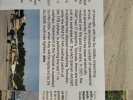I can't agree or disagree with that but what I have read is that there were a group of IRIAF officers from the Iraq war who fell in love with F-5E/F because of its performance during the war. It shot down Mig-25RB/PD, MIG-21MF/BIS, and SU-22/20 and just was never shot itself at the BVR range despite the fact there were a number of reports of MIG-25PD or MIG-23ML shooting their R-40, R-23 BVR missiles at it but none hit because of low RCS airframe. Its driven F/A-18 and F-18EF are documented by the US navy to have 1-2 m^2 RCS. It also took part in bombing or diversion-causing invasions into enemy territory such as during the attack on H-3 and was again never easy to catch. As underpowered it is, it can reach 0.9 Mach at low levels without afterburners.
So when these pilots and battle planners gained bigger ranks laterwards in IRIAF they started focusing on domestic production of a local F-5E/F variant. One of these guys was Mansour Sattari who was the IRIAF Commander in mid 1990s. His plan was to follow the Shahi era blue prints of F/A-18 domestic production and develop a local fighter having an airframe of F-5E/F with RD-33 turbofan with N019 radar with R-27/R-73 package. He died on duty and Russia backed out of MIG-29+MIG-31 deals with IRIAF which were signed by Rafsanjani and Yeltsin.
So the project went to CATIC of China under the title "Silk Route II" in which the avionics package of the most modern J7E were to be installed on F-5E/F with some 30-40 % locally built airframe. That plane became Azarakhsh (the green one) with stupid Sy-80 radar and PL-7C missiles. IRIAF was not happy with it at all because they abhorred F-7 already. So it never went into production.
The next plan was to make the plane even more modernized with a Western-origin avionics package. At that time Chinese NRIET which is part of CATIC China somehow started copying LEONARDO GRIFO radars of Italian origin. Some people including me believe that Italians sold their designs to CATIC for hefty prices because they would not want to sell anything to rogue nations directly. Grifo-S7 became NRIET KLJ-7 (FC-1/JF-17), Grifo-E became KLJ-7A AESA (J-31) and GRIFO-346 became SAIRAN (Iran) Bayyenat-II on Kowsar-I (Chinese designation is KLJ-6F probably???). The design is exact replica including the number and layout of T/R modules. It's quite a modern system with a Detection/Track range of 120/94 KM for 1m2 RCS target. It has look down shoot down capability and SAR of 1m2 (better than SU-35S's IRBIS), and has an internal ECM package. It's currently being used by M-346 and at one point was even considered for YAK-131. Technically it can track even a F-18EF at around 100 KM and fire a salvo of R-77AE/PL-12/PL-15 at it.
Because of sanctions on Iran during Ahmadinejad era, Chinese left and HESA was contracted by IRIAF to carry on the Silk Route II Project. They made some radical changes to the design such as the plan changed to the point that F-5E/F basic airframe will be modified with twin stabilizers and the airintakes will be squared up to gain high AOA and they will be under the wings and locally produced OWJ turbojets will be installed on the plane. According to the extremely detailed work published in key.aero every prototype had an increasing % of locally built airframes like Saeghe-II in 2015 was upto 70 % locally built.
The plan failed because (A) IRIAF had no money to supply to HESA for further work (B) The OWJ Turbojets were not powerful enough to extract fast pitch/yaw/roll for which the airframe was modified. Russia only supplied ~50 RD-33 in early 2000s which went to MIG-29 9.12 fleet despite the fact that order was for 250 RD-33 to be used on Shafagh and Saeghe-I/II. So Saegheh-I/II project got bundled up in 2016-2017 but somehow through lobbyism it was "inducted" into service at Tabriz TAB-2. HESA moved to Kowsar-I which is a mixture of few 100% locally built airframes while others use some % of local parts. According to BT the plane that was shown during its unveiling was almost 100% domestically built, was a bit larger the F-5F, it had a totally different internal structural layout (can be seen) to accommodate heavy avionics equipment. It has a modern radar (mentioned above)+ECM, Double Duplex Datalink to send and receive track-info with UCAVs/GWACS/other fighters which was confirmed by HESA-head himself. The avionics architecture consists of 4 x system computers for Weapons, Mission, and Flight management, and there is also a Ballistic Computer similar to SU-24/34 SVP-24 for precision ground strikes. Something surprising was the use of local FBW for the actuation of control surfaces. The plane turned to be quite modern for Iranian capabilities but
its underpowered. You can not take on an EF-2000 or Rafale while climbing at 34000 ft/min. F-5E/F can almost supercruise on J-85II/OWJ and reach 0.9Mach without burners so at low speed or altitude the turbojets can do fine but to defend airspace against invasion you need fast climb and high acceleration which can only come from a AL-31F like a monster. Also it has no BVR missile to use. It can technically easily integrate PL-12/15 or R-77AE but they have not landed in Iran yet. Dowran F-4E/D's were supposed to recieve PL-12 but we have never seen them in pics so no evidence exists while as long as SU-35S does not land in Iran R-77AE is beyond Iranian reach as well.





